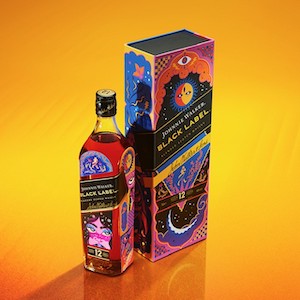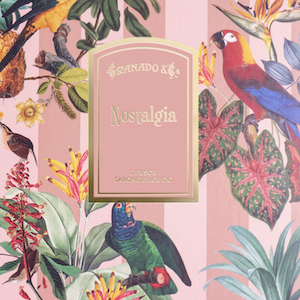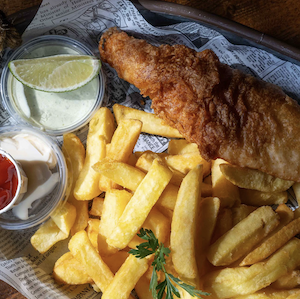Power; Art and Sole
By Jo Phillips
Brazil, that sexy sultry melting pot of passion and life. A country in South America with a reputation that spreads across the globe. Known for its culture, food, music, dance and even its world-renowned flip-flops. You guessed it; it is the home of Havaianas.
No flip -flop brand has come anywhere near the reputation of, in theory, this simple shoe brand. Mention the name to any Brazilian and you will get a wide beaming smile, a glint of pride in the eye and a knowing nod of the head. Let’s face it, Brazil is a 360 day a year flip-flop weather kind of a country, so that’s a great starting place for them to have grown from. The company actually invented the flip-flop which is quite the claim to fame and now is considered fundamental in the country. It has amazing brand recognition and serious pride from Brazilians, but it is a company known and loved all over the world and is actually being sold in more than 60 countries now.
The brand started out in 1962, with the name coming from the Portuguese name for people from Hawaii. The shoe design is actually based on a traditional Japanese sandal made of rice straw and the flip-flops’ textured sole is raised with rice style patterns. Initially, sellers in vintage camper vans drove around the country selling them directly to the workers. However, it was in the 1990s that the turn around came in regards to the multitude of colours we now associate with the company. People were turning them upside-down in order to acquire the coloured sole under their feet and so the brand added fully coloured soles and patterns to the collection including world flags [pattern to the range in time for the 1998 football world cup.
The company has hugely impacted the Brazilian economy with over 3 million pairs sold to date both in its home and globally. They partnered 15 years ago with a local charity, IPÊ, with its mission to help Brazil’s natural environment and endangered species. They were early adopters of partnering with a charity because what we see today as common-place was virtually unheard of then. The Havaianas IPÊ collection gives 7% of net sales of the model to the Institute, and with these funds, the latter has created a long term economic fund dedicated to financing the institution in its work on the Atlantic forest, the Amazon jungle and Pantanal region. The IPÊ charity has been working for over 21 years to protect the flora and fauna of Brazil through the research of vulnerable and endangered species, the restoration of landscapes and numerous projects that contribute to the improvement of the quality of life of local communities.
Painting of Capuchin monkey by Arlin Graff Image Global Street Art
The Havaianas IPÊ collections have always been designed with images of Brazil’s fauna and flora. Many of the species featured are endangered, and are studied by the Institute. The collection reflects the range of colours and diversity found in Brazilian forests, as well as presenting native species that are often unknown.
Alongside their charity work, Havaianas have collaborated with many local artists promoting their works and the message coming alongside their works. Artists include Naia Ceschin, a designer and illustrator from São Paulo who used geometric shapes to represent Brazilian flora and fauna as well as São Paulo-based artist, Ricardo Negro whose work depicts the favelas in Brazil, which are the reality for thousands of communities across Brazil. Each design contains an element of joy, purity and intimacy that only someone who has been raised in Brazil could recognise and depict.
They have also worked with artists from different countries around the world, for example, The local soul project was about giving local artists in 3 locations, Ibiza, Tel Aviv and Mykonos, the chance to use Havaianas as a canvas to showcase their design and inspiration. Artists were Rafi Perez from Tel Aviv, Athenian, Marina Vernicos, and from Ibiza, World Family Ibiza.
The latest collaboration feels the most natural to date because the brand and the charity have come together with Brazilian street artist Arlin Graff who is particularly known for his celebration of the animals of his home country created in monolithically large scale graphic almost cubist wall art. So the collaboration with artist Arlin Graff is more than natural. He is spot-on as a collaborator for the brand. In fact, this collaboration couldn’t fit better. This year Havaianas IPÊ collection is available in three models that reflect the fauna of Brazil.
Arlin Graff main area of work is giant graffiti of animals indigenous to the area in Brazil, where he comes from. Growing up he talks of seeing parakeets and black-faced capuchins and notices now that where he grew up, it is dramatically different as seeing these divine gifts of Mother Earth are now rare. As their habitat becomes smaller and smaller due to deforestation of the rain forests the animals become rarer to see and engage with.
Arlin’s work is very distinctive. Modernist lines and cubes dominate his shapes with even the wildlife images are made up of graphic blocks of zinging colour. Think almost deconstructed and pixel-like artworks. His journey towards his images started with him as a youth doing graffiti but ended up with him pursuing a career as a graphic designer and art director. He worked across commercial briefs and clients, going on to study industrial design and even architecture.
And this is where the influence in his graphic can be traced back to. Although he feels that his current work is not influenced per se, by commercial work he did before, the effect is definitely present once you are aware of his past. The world he had journeyed through in his past in melded into his style of graffiti art for sure. Look at the use of colours which is very powerful and lines and blocks, all give a hint to his past, but bring an utter freshness to his current world – cubist, graphic, linear not terms often associated with street art.
However, Arlin does say that growing up in the countryside where there was not a plethora of toys in his home, he would sit with his dad, play and build things with bits of wood cut-off and that somewhat shows in the graphic shapes in all his artwork.
His process is more akin to graphics than straight forward street art as he works to create his giant images with grids that he fills in with colours and shapes to create the full picture. This grid is not a squared-off neat mathematical shape but a set of lines and ridges he fills up, hence having some kind of connection however liberal commercial artists except he is far more free-form in his approach.
Image Global Street Art
To celebrate the collaboration there was a week-long street art installation by the brand and Arlin Graff promoting the Havaianas IPÊ collection. Graff created a giant mural in London’s Shoreditch area of the capuchin monkey seen on one of the three flip flops that are part of this collection. The other two designs are the red-and-green macaw, a jaguar and a black-faced capuchin monkey, all animals that were the first to come into his head as animals he connected with and loved from childhood, when he was approached by Havaianas.
The strength of this collaboration is certainly based in graff’s powerful abstract yet strong real depictions of the natural world he grew up around. He clearly loves and feels passionate about saving not just them but the natural world they live in, alongside the genuine emotions involved from not just him, the charity of the flip flop brand which says of itself, that it is here to represent comfort, happiness and most of all freedom; in this case for animals as well as humans.
Arlin Graff.com








